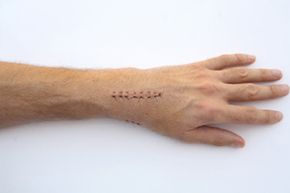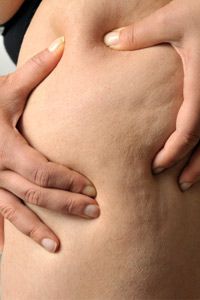In scary movies, scars often clue us in to who the bad guys are: Characters like Freddy Krueger of "Nightmare on Elm Street" wear them like a badge of evil. The truth, however, is that scars are simply thick patches of skin that form over healing wounds, and anyone can get them -- even the good guys. In fact, it's rare to meet an adult who doesn't have a scar somewhere.
Scars are usually pinker in color and shinier than the surrounding skin, and they form a permanent protection after burns, sores, cuts and scrapes, almost like a natural bandage. As the body heals from an injury, it uses collagen as a framework to repair damaged tissue. This is an important and necessary step for healing -- think of it as a scaffolding that lets builders repair a wall. But collagen has a different color and texture than the surrounding skin. As a result, there's often a visible mark left after the injury heals. After severe injuries that involve missing tissue, scars can be pitted or craggy.
Advertisement
There are many different types of scars. Keloid scars, for example, extend beyond the original wound site, while contracture, or burn, scars, tighten the skin and limit your range of motion. And acne scars are a category unto themselves. Because there are so many kinds of scars and ways in which they can develop, it's almost impossible to go through life without acquiring at least a few [source: MedicineNet].
The good news -- especially if you have a lot of scarring -- is that dermatologists offer a number of different options, including creams and outpatient treatments, to get rid of these blemishes. Only in rare cases, in which the scarring is very deep, do doctors typically recommend surgery [source: American Academy of Dermatology]. If you don't want to visit the doctor's office just yet, there are some home remedies that you can safely try, too.
Read on to learn more about some of the treatment options for scars.
Advertisement


